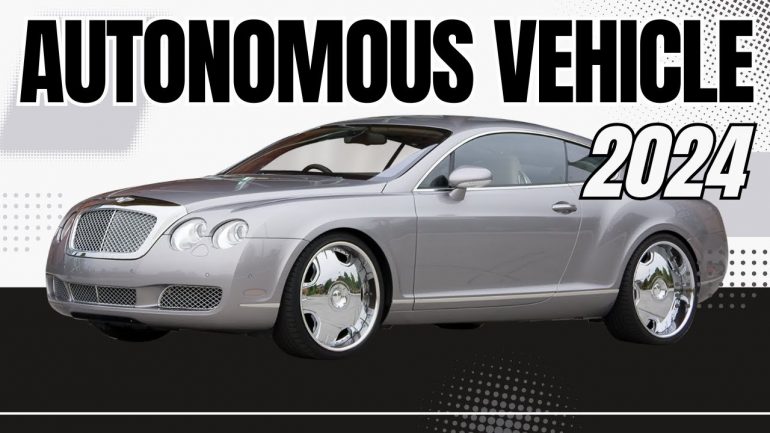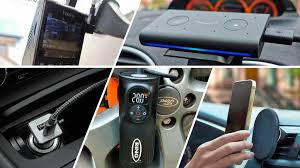The world of autonomous vehicles has evolved rapidly in recent years, with companies racing to develop self-driving technology that promises to transform transportation as we know it. As we enter 2024, the question on many minds is: Are we finally ready for fully autonomous cars? While we have witnessed impressive advancements in self-driving technology, the reality of fully autonomous vehicles (AVs) on the road is still met with a mix of excitement and skepticism.
In this blog, we’ll explore where autonomous cars stand in 2024, the technology behind them, the challenges we still face, and whether the promise of a fully automated driving future is closer than ever.
The Current State of Autonomous Cars in 2024
As of 2024, autonomous vehicles are not a futuristic concept but a tangible reality. Several companies, including Tesla, Waymo, Cruise, and Baidu, have made significant strides in developing self-driving cars that are capable of navigating city streets, highways, and even complex environments with minimal human intervention. However, the level of autonomy these cars offer varies.
Levels of Autonomy: What Does “Full Automation” Mean?
The Society of Automotive Engineers (SAE) defines six levels of automation for vehicles, ranging from Level 0 (no automation) to Level 5 (full automation). To achieve full automation, a vehicle must be able to perform all driving tasks, including monitoring the environment, decision-making, and control of the vehicle, without any human intervention. In 2024, most vehicles with autonomous features fall between Level 2 (Partial Automation) and Level 3 (Conditional Automation), with some companies working towards Level 4 (High Automation), where vehicles can operate autonomously in certain conditions.
- Level 2 (Partial Automation): Features like adaptive cruise control and lane-keeping assist are commonly available, but the driver must remain engaged and ready to take control at any time.
- Level 3 (Conditional Automation): A few automakers, such as Audi and Mercedes-Benz, are introducing Level 3 systems that allow for some hands-free driving in specific conditions (e.g., highways), but still require human oversight.
- Level 4 (High Automation): This is the stage at which cars can drive autonomously in certain predefined environments (e.g., urban areas or dedicated lanes), but human intervention is not required in those situations. Waymo and Cruise are making significant strides toward Level 4.
Tesla’s Full Self-Driving (FSD) and Waymo’s Autonomous Taxi Services
Tesla, one of the most recognized names in autonomous driving, has introduced its Full Self-Driving (FSD) software, which promises to handle most driving tasks but still requires human supervision. Tesla’s Autopilot system can change lanes, navigate highways, and park the vehicle autonomously. However, full autonomy remains out of reach, with many experts agreeing that human drivers will still need to monitor the vehicle’s actions and take control in certain situations.
Waymo, a subsidiary of Alphabet (Google’s parent company), has launched autonomous taxi services in select cities, including Phoenix, Arizona. These cars operate with Level 4 autonomy, meaning they can drive themselves within specific geographic areas, like mapped urban routes, without human intervention. However, Waymo’s cars still have some limitations, such as restricted operating hours and the occasional need for a driver to take over during extreme weather conditions or unexpected events.
Challenges to Full Automation
While the promise of fully autonomous cars is tantalizing, there are still several hurdles to overcome before we see widespread adoption of Level 5 vehicles. These challenges include technology limitations, regulatory issues, ethical concerns, and societal readiness.
1. Technological Limitations
Although self-driving technology has made great progress, there are still significant technological challenges that need to be addressed for true full automation:
- Sensor Limitations: Self-driving cars rely on a combination of sensors, including LiDAR (Light Detection and Ranging), cameras, radar, and ultrasonic sensors, to perceive their environment. These sensors are highly effective in ideal conditions, but they struggle in certain scenarios such as heavy rain, fog, or snow, where visibility is compromised.
- Edge Cases and Unpredictable Situations: Despite advanced algorithms and machine learning, autonomous vehicles still struggle to make decisions in complex, unpredictable environments—such as reacting to a pedestrian suddenly crossing the road, an aggressive driver, or an animal darting into traffic. These “edge cases” can present a challenge for the AI systems responsible for decision-making in self-driving cars.
- Cybersecurity: With the increasing reliance on digital systems, ensuring that autonomous cars are immune to cyberattacks is crucial. A successful hack could compromise vehicle control, posing significant risks to passengers and the general public.
2. Regulatory and Legal Challenges
In addition to technological issues, the path to full automation is hindered by the lack of clear and consistent regulations across regions and countries:
- Varying Regulations: Different countries and even states have differing regulations regarding the testing and deployment of autonomous vehicles. In the U.S., for example, California has been a leader in promoting autonomous vehicle testing, while other states have lagged behind in creating legal frameworks to accommodate AVs.
- Liability and Insurance: As autonomous vehicles take control of driving, questions around liability in the event of an accident arise. Who is responsible if a self-driving car is involved in a crash? The driver, the manufacturer, or the software developer? Clear legal frameworks are essential for building trust in autonomous systems and allowing manufacturers to operate freely.
3. Ethical Considerations
Self-driving cars raise numerous ethical questions, particularly when it comes to decision-making in life-threatening situations:
- The Trolley Problem: One famous ethical dilemma is the “trolley problem,” in which a self-driving car must decide whether to crash into a group of pedestrians or swerve and potentially harm the passenger. How should a vehicle’s AI be programmed to make such decisions? The lack of a universally accepted ethical framework for AI makes it difficult to develop solutions that align with societal values.
- Bias in AI: AI systems learn from vast datasets, and if those datasets are not diverse or representative, there’s the potential for biased decision-making. For example, self-driving cars may not accurately recognize people of different races, which could lead to safety concerns.
Is Full Automation Ready for 2024?
While there have been remarkable advancements in self-driving technology, the answer is no—we are not yet fully ready for widespread deployment of Level 5 autonomous vehicles in 2024. The technology is improving rapidly, but there are still significant barriers to overcome before we can trust fully autonomous vehicles to operate without human oversight. That being said, autonomous driving is undoubtedly on the horizon, and advancements in 2024 are setting the stage for broader adoption in the coming years.
For now, Level 3 and Level 4 vehicles are leading the way, offering hands-free driving in certain conditions. These vehicles can handle most driving tasks, but human intervention is still required in some situations. The progression toward full automation is expected to continue, with improvements in AI, sensor technology, and regulatory frameworks paving the way for a future where cars may drive themselves without any human input.
Conclusion: What the Future Holds
As we look toward the future of autonomous driving, the transition from Level 3 to Level 5 automation will be gradual. In 2024, we are witnessing the early stages of what promises to be a transformative shift in how we think about and interact with cars. The combination of autonomous vehicles, artificial intelligence, and machine learning will eventually lead to a future where cars drive themselves with the utmost reliability and safety.
While full automation may not be entirely ready for mass adoption in 2024, the progress we’ve made so far suggests that we’re on the right path. As technology continues to evolve and challenges are addressed, autonomous vehicles will become an increasingly common sight on our roads, reshaping transportation and mobility as we know it. The question is not if full automation will come, but when—and the answer is likely closer than we think.
3




